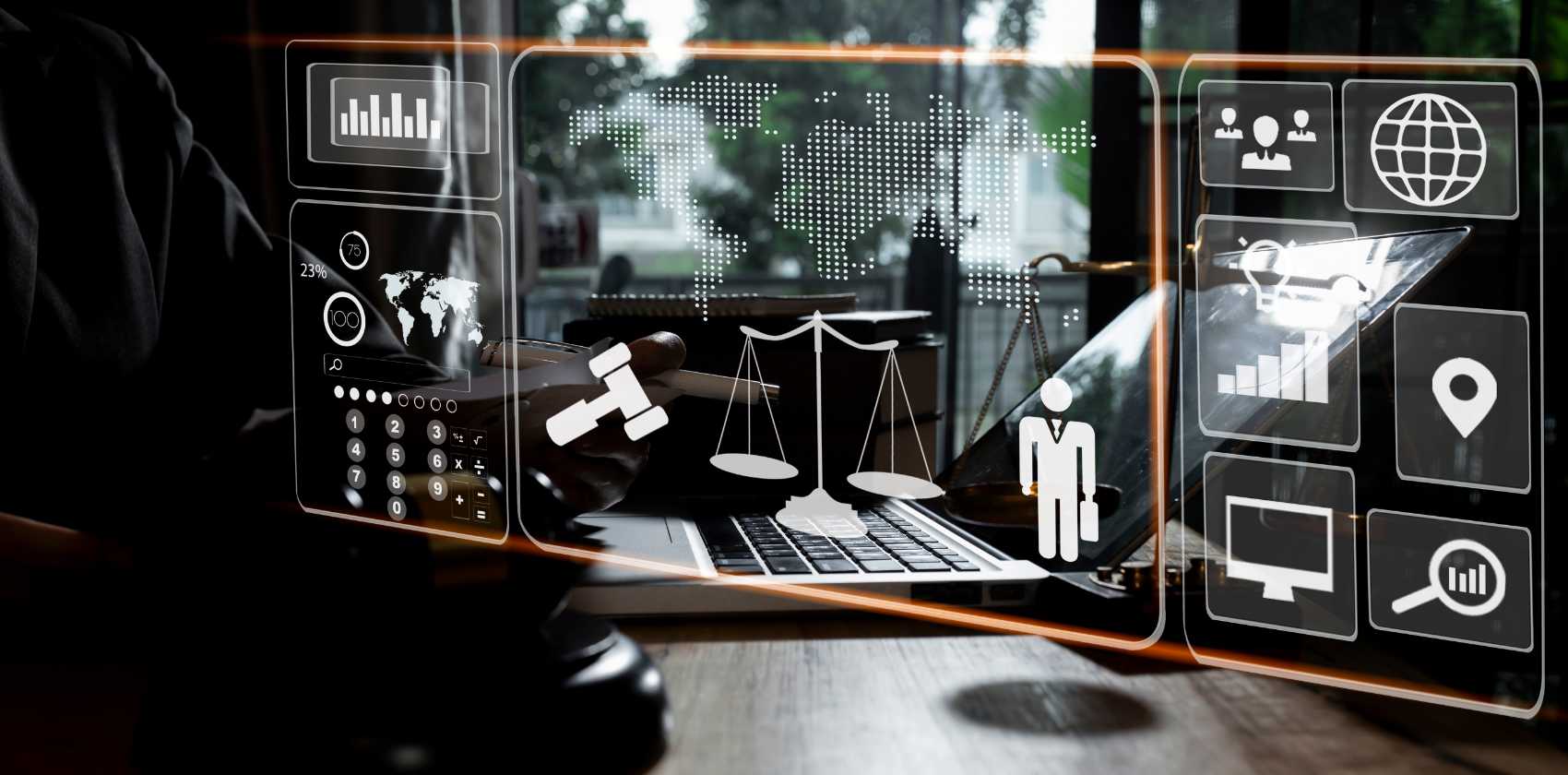
Virtual Cross-Examination: Boon or Bane?
Introduction
Virtual hearings are increasingly becoming the norm with the onslaught of the COVID-19 pandemic in 2020. Any prior aversion to the use of technology had to quickly give way to remote working technologies, including the use of video-conferencing facilities. It is therefore important that one actively takes steps to prepare for a virtual hearing.
This article will explore the practical difficulties of taking evidence via virtual cross-examinations. Following which, this article will suggest how to prepare for virtual hearings in line with existing international guidelines on the use of video-conferencing facilities in legal hearings.
The Purpose of Cross-Examination
The ultimate objective of cross-examination is to use the witness’s testimony to tell our side of the story that our client’s case is deserving of justice. As with all good story-tellers, an effective cross-examiner does not only rely on words to tell a convincing story. What completes it are the surrounding circumstances, such as the cross-examiner’s tone of voice, the facial expressions of the witness when asked a question and of the cross-examiner when given a response, the rhythm of the cross-examination, and the keenness of the cross-examiner’s awareness to his listener’s (in this case, either the judge or arbitrator) reactions.
As Justice Anselmo Reyes best puts it in his speech at the CIArb Taiwan Chapter Event on 16 August 2019:
“As a cross-examiner, … You look the witness in the eye and you conduct a conversation. … An eye to eye, frank conversation.”
The use of video-conferencing facilities only does as much as to allow the cross-examiner, the witness, and the Judge or arbitrator to see each other’s faces to the extent that the video allows, and to hear what all involved parties have to say. It takes away the “eye to eye” conversation that, arguably, underpins a physical cross-examination.
The Impact of Virtual Cross-Examinations
This substitution of real-life, human, interaction in court with video-conferences arguably makes it difficult for the credibility and strength of witness testimony to be appreciated. Particularly, it would be more difficult for the Court to discern the body language, facial expressions and changes in tone of the witness being cross-examined.
Further, other common concerns over the use of technology include the quality and reliability of video-conferencing facilities. Regardless of the degree of preparation for virtual hearings, there may be unforeseen technological breakdowns during the hearing itself. This includes unprecedented loss of video and/or audio connection, software or hardware breakdowns, and unstable internet connection.
Another issue to tackle is the readiness of access to relevant documents for the proceedings. Practitioners would have to ensure that all relevant documentation is easily accessible by all the involved parties during the proceedings by, for example, uploading the documents on a cloud-based sharing system. However, this must be balanced against the need to ensure that the sharing system is secure as against third parties.
Finally, the taking of evidence via remote means runs the risk of witness coaching off-camera. With leave from the Court or tribunal, practitioners should arrange for counsel in the relevant jurisdiction to be present while the witness is giving evidence.
Take the Federal Court of Australia decision of Sino Dragon Trading Ltd v Noble Resources International Pte Ltd [2016] FCA 1131 as an example. In that case, Sino Dragon sought an order setting aside the final award under Article 34(2) of the United Nations Commission on International Trade Law Model Law on International Commercial Arbitration1United Nations Commission on International Trade Law Model Law on International Commercial Arbitration (as adopted by the United Nations Commission on International Trade Law on 21 June 1985, and as amended by the United Nations Commission on International Trade Law on 7 July 2006). on the basis that, inter alia, the evidence given by two witnesses called by Sino Dragon in the arbitration via video-conference was beset by technical difficulties and therefore could not be properly presented.
Some of the technical difficulties faced during the virtual arbitration were as follows:
- Since the planned video-conference facility did not work on the day of the hearing, Skype had to be used instead, and the witness had to give his evidence in a split format, i.e. his picture being transmitted by the screen but his voice being heard by telephone link;
- Neither witness had been provided with copies of the documents that the claimant wished to cross-examine on;
- Since the interpreter was struggling with interpreting the witness’s evidence into English, and in the absence of another accredited interpreter where the witness was located, the solicitor for the respondent had to undertake the task of interpreting while the interpreter engaged by the claimant who was present at the hearing would follow the solicitor’s interpretation and identify any areas of disagreement;
- Another witness relied on by the respondent was present in the same room as the respondent’s witness being cross-examined, and the former was only asked to leave when the Court became aware of his presence through the video.
The Court dismissed the application to set aside the award, holding that while virtual cross-examination was less ideal than taking evidence from a witness who was physically present, it did not in and of itself produce “real unfairness” or “real practical injustice”.2Sino Dragon Trading Ltd v Noble Resources International Pte Ltd (2016) FCA 1131 at (154). The Court further considered that the difficulties with the evidence by video-conference could have been avoided by Sino Dragon by “making the video-link arrangements through a recognised and experienced provider” and by “[having] the link tested in advance to confirm it was operational”, especially after the difficulties encountered on the first day of the hearing.3Sino Dragon Trading Ltd v Noble Resources International Pte Ltd (2016) FCA 1131 at (155). These were, without explanation, not done by Sino Dragon. Further, the Court considered that alternative arrangements could have been made for the witness to travel to Australia, and Sino Dragon could have raised the issue and recalled the witnesses during the arbitration instead of waiting for the final award to be delivered.4Ibid.
The Court’s decision appears to have been predicated on the explanation that more could have been done by Sino Dragon to prevent the difficulties from arising. However, if Sino Dragon had already taken the steps to minimise difficulties in virtual hearings, would the decision have been the same? Arguably, the technological issues faced by Sino Dragon could have happened to a reasonably well-prepared practitioner at another hearing, thereby preventing a witness from properly presenting his evidence. On this basis, it may be fair to set aside an arbitral award for the lack of due process arising from the virtual cross-examination.
From the litigation perspective, these practical difficulties are also relevant considerations for the Court to determine whether to allow video-link evidence under section 62A of the Evidence Act (Cap 97, 1997 Rev Ed) (the EA). Prior to COVID-19, video-link evidence could only be given with leave of the court under section 62A of the EA. The Court would consider whether the prejudice arising from wrongful exclusion of evidence would outweigh the prejudice caused by virtual cross-examination.
In the recent case of Anil Singh Gurm v J S Yeh & Co and another [2020] 1 SLR 555, the Court of Appeal noted that “a court’s assessment of a witness’s credibility would, and should, seldom hinge on that witness’s demeanour on the stand”, and that in any case, the Court could decide the weight to place on video-link evidence depending on the deficiencies arising from such testimony.5Anil Singh Gurm v J S Yeh & Co and another (2020) 1 SLR 555 at (71). Nevertheless, and importantly, the Court held that it would be relevant to consider whether the presence of practical difficulties (such as the high volume of documents involved) may result in unfair prejudice to the opposite party, thereby tipping the balance against granting permission for video-link evidence.6Anil Singh Gurm v J S Yeh & Co and another (2020) 1 SLR 555 at (73).
Suggestions on Preparing for Virtual Hearings
There are several existing and recent guidelines in place that practitioners may have regard to, such as:
- The Guide to Good Practice on the Use of Video-Link under the Hague Evidence Convention (16 April 2020);
- The Seoul Protocol on Video-Conference in International Arbitration (18 March 2020); and
- The International Chamber of Commerce Report on Information Technology in International Arbitration (October 2017).
The following are some suggestions on preparing for virtual hearings:
- Connectivity: Parties should ensure that there is internet, audio, and video connectivity required for the hearing. There should be a test-run if possible to minimise uncertainty on the actual day of the hearing.
- Video-conference facilities: Parties should use reliable video-conference facilities that the witnesses have access to. The stability of connection and audio and video capabilities of the facility should be tested beforehand. Where evidence is to be given remotely, practitioners should also engage counsel in the relevant jurisdiction to be present while the witness is giving evidence to prevent witness coaching off-camera.
- Live transcription service: It may be prudent to arrange for live transcription services where video-link evidence is given. This would minimise the risk of misunderstandings, and ensure that all parties can follow the proceedings remotely.
Conclusion
Virtual cross-examination, previously more the exception than the norm, is becoming the default modality for most hearings during the pandemic. The uncertainty of technology may become a bane in dispute resolution if not properly managed.
While this uncertainty may be daunting to some, technology is here to stay. Practitioners should therefore be flexible and adapt rapidly to this new reality in order to protect the due process of dispute resolution and best represent our clients.
Endnotes
| ↑1 | United Nations Commission on International Trade Law Model Law on International Commercial Arbitration (as adopted by the United Nations Commission on International Trade Law on 21 June 1985, and as amended by the United Nations Commission on International Trade Law on 7 July 2006). |
|---|---|
| ↑2 | Sino Dragon Trading Ltd v Noble Resources International Pte Ltd (2016) FCA 1131 at (154). |
| ↑3 | Sino Dragon Trading Ltd v Noble Resources International Pte Ltd (2016) FCA 1131 at (155). |
| ↑4 | Ibid. |
| ↑5 | Anil Singh Gurm v J S Yeh & Co and another (2020) 1 SLR 555 at (71). |
| ↑6 | Anil Singh Gurm v J S Yeh & Co and another (2020) 1 SLR 555 at (73). |






